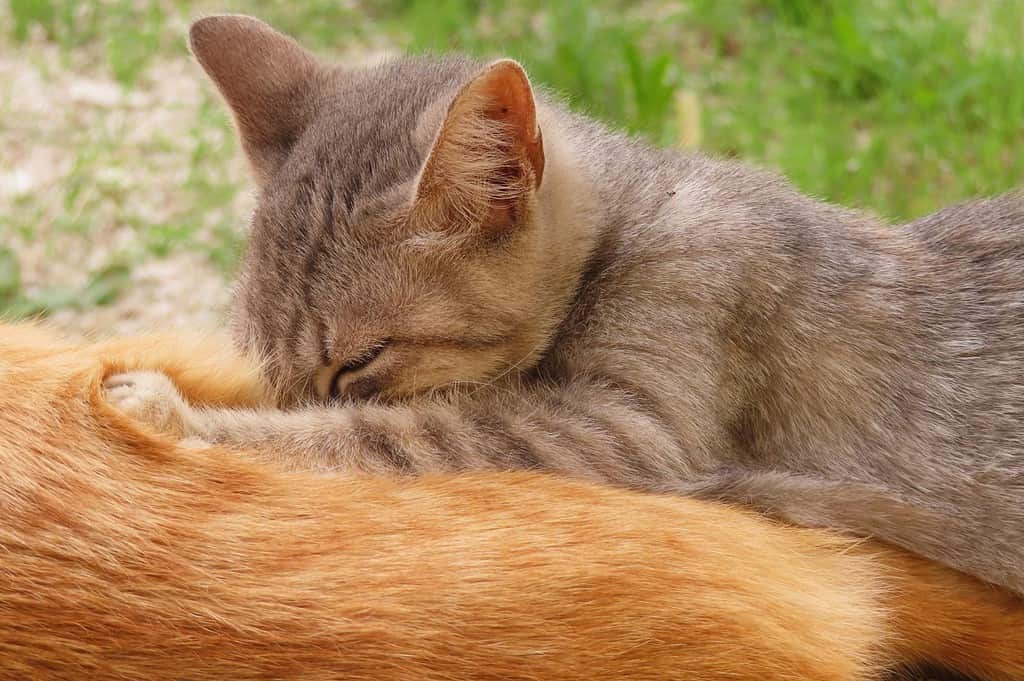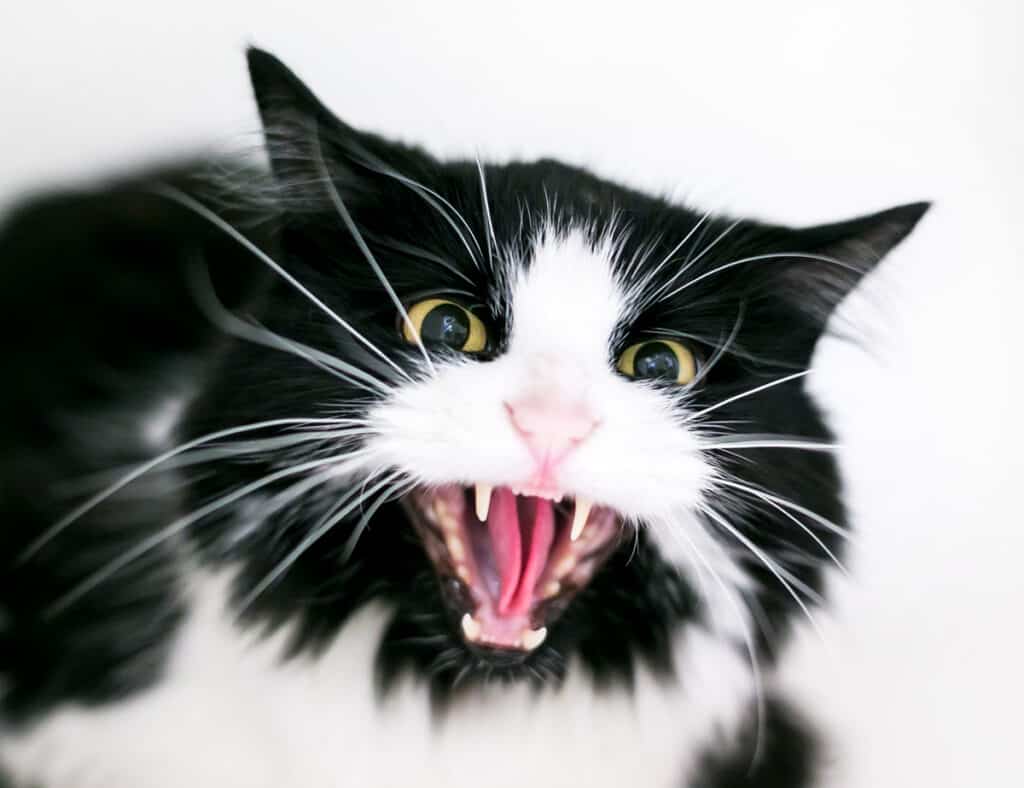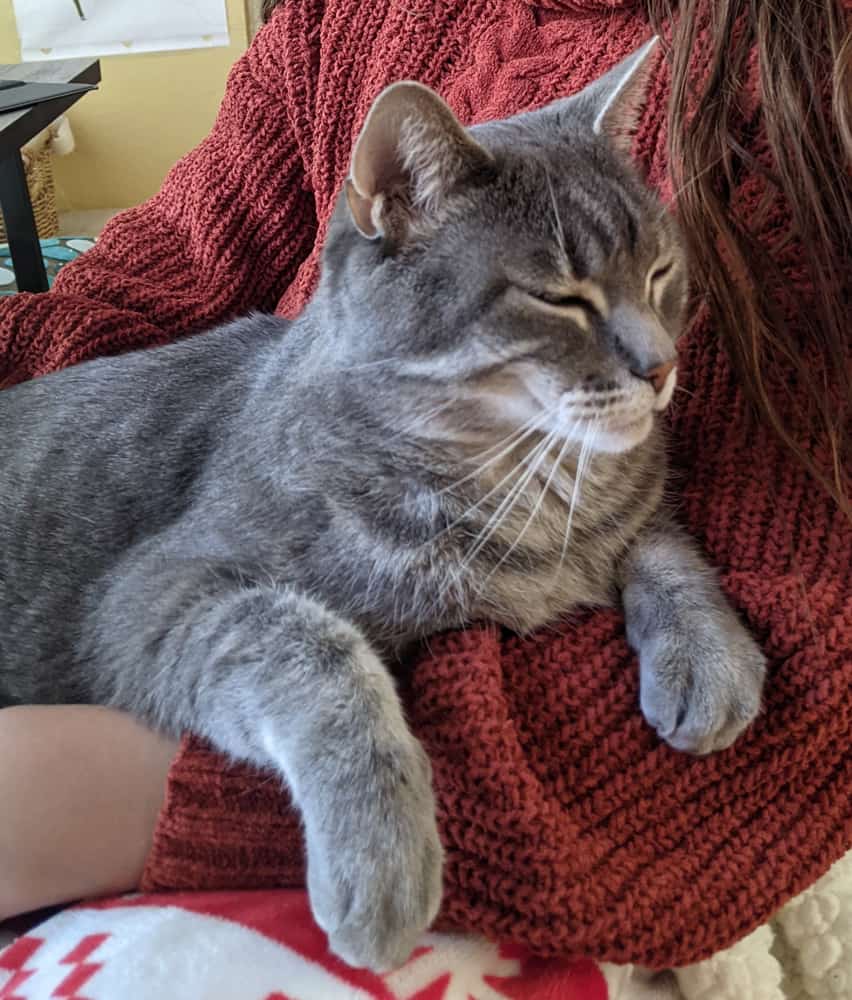How do cats make the unique deep-throated purr sound? The specific mechanism behind a cat’s purr has been a subject of research and debate for years. New research has suggested an alternative explanation to the widely held belief that cats use what is known as the active muscle contraction hypothesis.
What is purring?
Purring is a distinct, rhythmic sound produced by domestic cats and some species of big cats. Cats will purr for a variety of reasons: as a show of contentment, to ask for food, to self-soothe when stressed, and to heal bones and wounds.

Purring is at very low frequency sound made by cats, usually reaching between 20 and 30 hertz (Hz). This ability of a small animal, with such short vocal cords, to produce such deep sounds has baffled scientists. Most animals that can produce low frequency sounds are incredibly big and have very long vocal cords, such as elephants.
What is the active muscle contraction hypothesis?
Active muscle contraction (AMC) is a hypothesis first proposed in the 1970s by cat researchers to explain how cats produce the purring sound. With AMC, the purring sound is believed to originate in the larynx, more commonly known as the voice box. Inside the larynx are two important structures called the vocal cords, which play a significant role in a cat’s ability to produce sounds.
With AMC, it’s thought that the brain sends a repetitive neural oscillator signal to the voice box muscles. This signal causes the vocal cords to twitch at a rate of 25 to 150 vibrations per second (Hz). This twitching causes a sudden constriction and relaxation of the vocal cords, in essence opening and closing the airway at that rapid rate. When the cat breathes in and out while this is happening, the purring sound is produced.

This hypothesis is a departure from the way that most sounds in a cat are produced. Most mammals, which includes cats, use what is known as the myoelastic-aerodynamic (MEAD) principle to produce sounds. The term “myoelastic-aerodynamic” is a combination of “myo-“, referring to muscles, and “elastic”, referencing the elastic properties of tissues, combined with “aerodynamic”, which relates to the physics of air flow.
With MEAD, a brain signal prompts the vocal cords to come together. As air passes through the larynx, it prompts these cords to vibrate numerous times per second, generating sound. With MEAD, the signal from the brain only occurs once at the beginning to trigger the sound, after which a passive flow-induced self-sustained oscillation kicks in. In contrast, with AMC there is a continuous flow of signal from the brain to produce the sound.
When a cat is meowing, growling, or hissing, it’s the phenomenon on MEAD that is enabling those sounds to be produced. Whereas, since the 1970s, scientists were operating on the hypothesis that for purring, the active system of AMC was in play.
New research refutes established assumptions about how cats purr
In this new 2023 study, scientists replicated the mechanism for purring in a laboratory by using the larynxes of eight deceased cats (with the permission of their owners—all of the cats used in the study had died of illnesses). The vocal cords were then pinched together and warm, moist air (replicating breathing) was passed through them. This test was designed to see if purring could be produced without input from the brain or muscles.
The end result was that researchers were able to produce purring sounds in all eight larynxes. This indicates that cats are able to produce low frequency purring at frequencies between 25 and 30 Hz with requiring ongoing signals from the brain or muscle contractions.

What is enabling this to happen? Scientists from this study suggest that it might be the presence of fibrous tissue embedded in the cats’ vocal cords, which they refer to as “pads”, that allows these small feline to produce such deep sounds. The presence of these pads is believed to increase the density of the vocal cords which in turn slows down the vibrations and produce lower frequency sounds.
This new research points towards purring, like the growling, hissing, and meowing of cat, as being a passively created sound. This refutes the long standing belief that purring requires an active mechanism with continuous signaling from the brain.
The study is limited in that it looked at larynxes in isolation. How a living cat purrs is still something that researchers have yet to be able to observe. What the research has shown is that a MEAD-driven mechanism for purring is possible.
References
Herbst, C. T., Prigge, T., Garcia, M., Hampala, V., Hofer, R., Weissengruber, G. E., … & Fitch, W. T. (2023). Domestic cat larynges can produce purring frequencies without neural input. Current Biology. DOI: https://doi.org/10.1016/j.cub.2023.09.014
Jacobs, P. (2023, October 3). How do cats purr? New finding challenges long-held assumptions. Science. https://www.science.org/content/article/how-do-cats-purr-new-finding-challenges-long-held-assumptions







